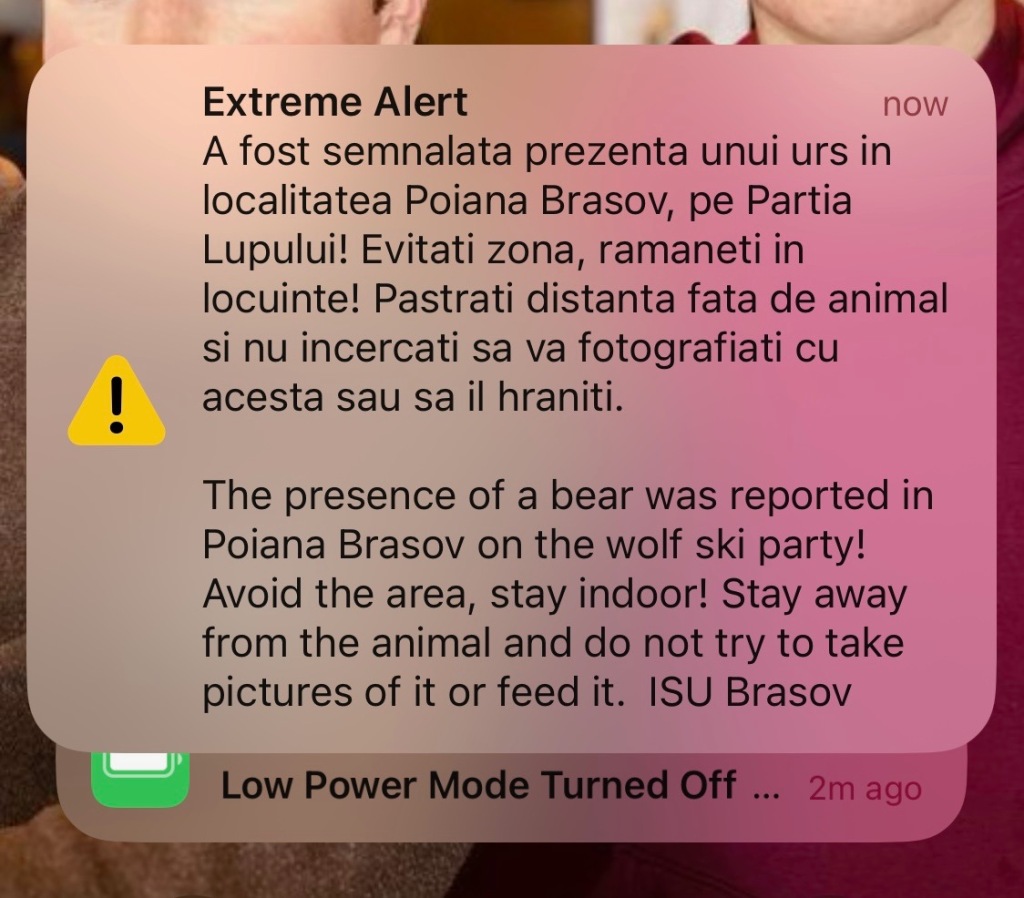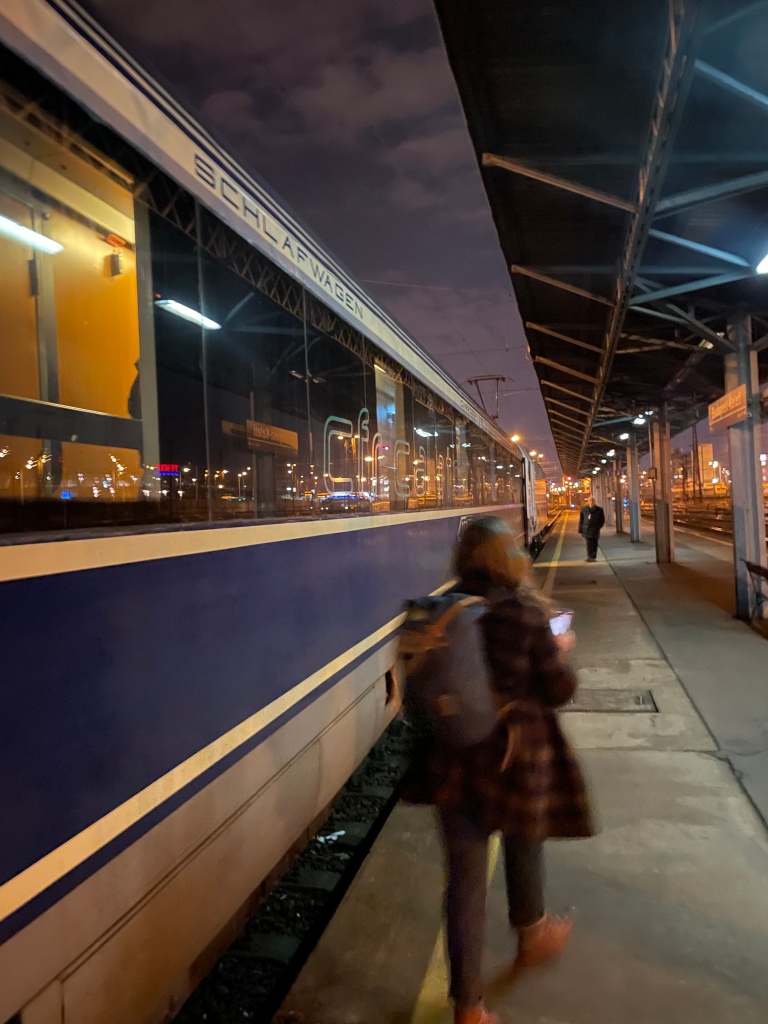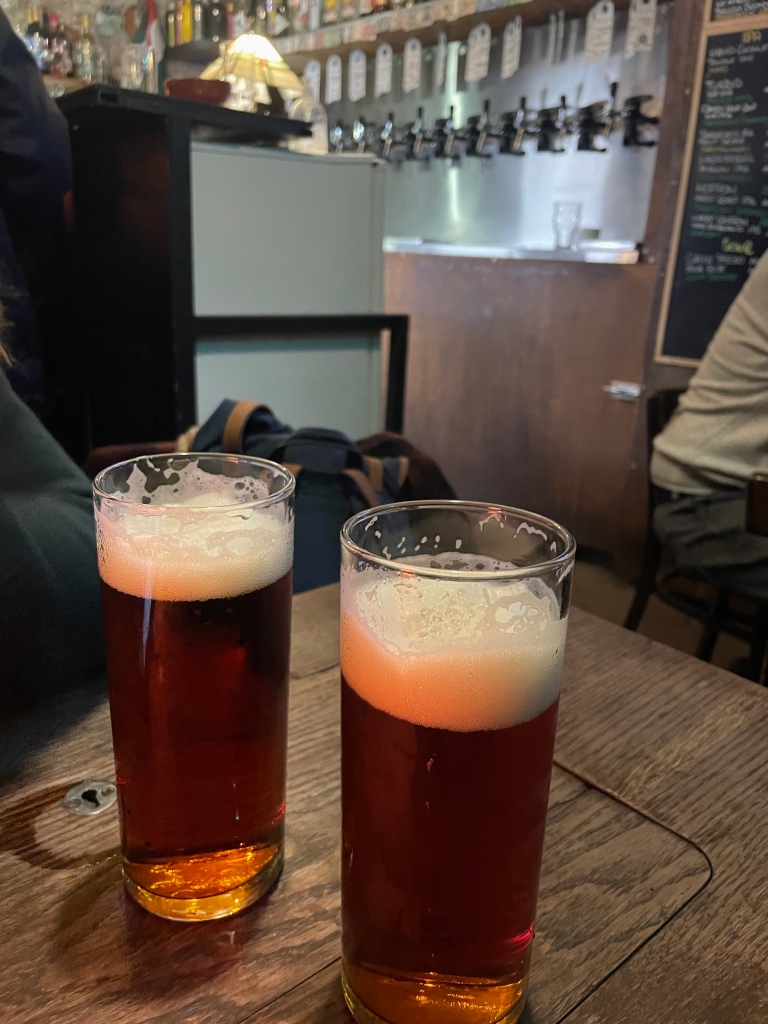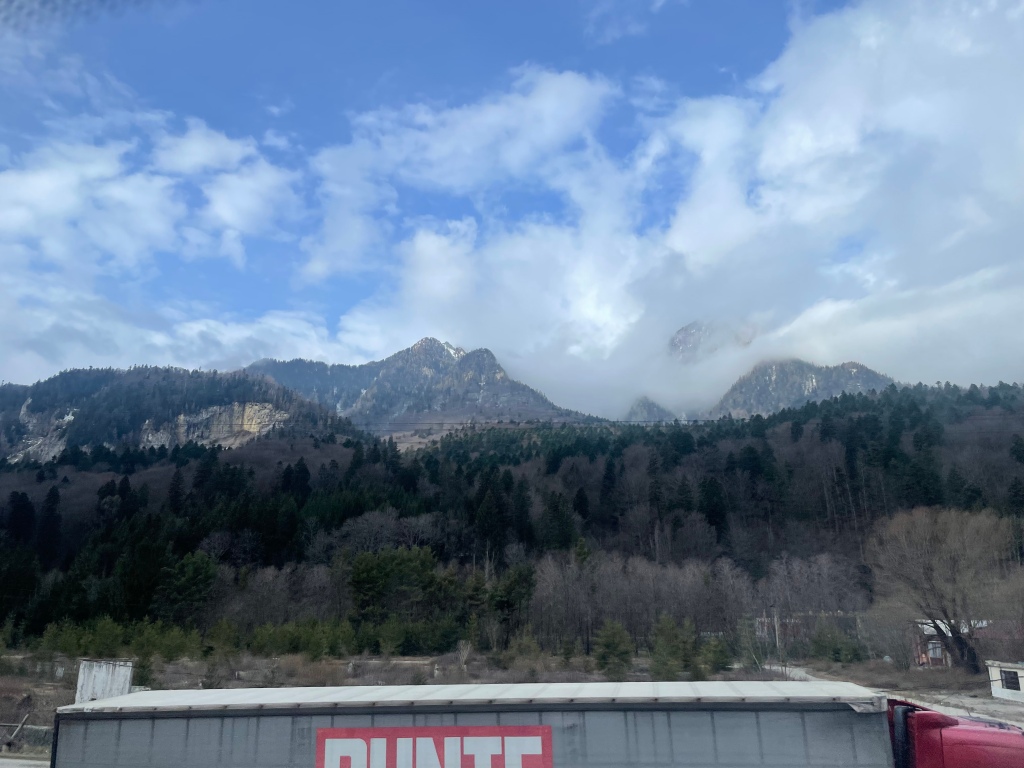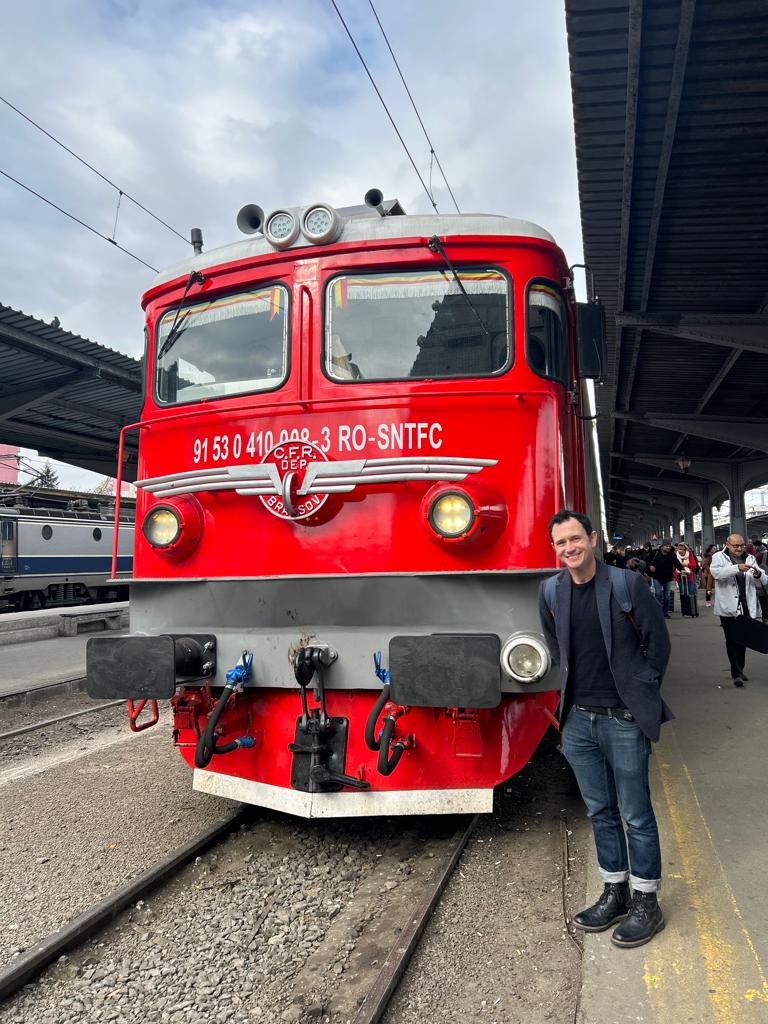As awakenings go it was an unusual one. An entire Romanian Railways vagonul de dormit (Sleeping Car) worth of passengers’ mobile phones emitting a three-beep alarm. Bleary-eyed, I pulled up the blinds to reveal a snowy Transylvanian landscape, all birch trees, woodland paths and, in the distance, jagged-tooth mountains. And on my phone the words EXTREME ALERT! The presence of a bear was reported … avoid the area! Stay indoors! Keep away from the animal and do not try to take pictures of it or feed it.
Inside the cosy embrace of the sleeper I was momentarily confused. Unless there was a bear loose somewhere in the train there seemed little need for such an alarm. I had no plans to go outside at all until we reached Bucharest, some four hours down the line. Most intriguingly, whose instinct on bumping into a bear on a remote track in the Carpathian mountains was to see if it was hungry? The alert, it transpired, was something of a blunt instrument, aimed at skiers but delivered to everyone in the vicinity. We just so happened to be passing through Romania’s main winter sports area around Brașov.
The Ister, so named for the Roman term for the Danube river and a stately bastion of Central European train travel, has been passing this way every day since inheriting the trans-continental baton from the starily-named, but actually pretty workaday, Orient Express. While the long-distance link from Paris itself to Bucharest is now severed into sections, the Ister, without fanfare, forms the evening departure from Budapest, Hungary, to Romania’s capital.
Budapest is a wonderfully well-connected place to start or finish an adventure on the rails. From here, long-distance services snake their way across Europe; reaching first Bratislava, then Vienna and Munich to the west, Bucharest to the east, Warsaw to the north, and Zagreb and the Croatian coast to the south. Most services of significance depart from stately Keleti (Eastern) station, one of the continent’s finest hubs. Four trains travel from here to Bucharest each day – one day train and three night services, named Muntenia, Ister and Dacia.
My travelling companion and fellow train buff Imogen and I decided to travel on the middle of the three. It offered a dinner-time departure and mid-morning arrival. That meant a choice between a seat, a bunk in a four-berth couchette or a more private, and slightly more expensive, sleeper compartment. In fact the latter was the only choice available due to our late booking. The compartment came with bedding already made up and bottles of water.
Before the train, there was some time to enjoy the fabulous winter destination that is Budapest. In between invigorating hikes to Buda vantage points was the chance for chocolate cake in grand cafes and, best of all, the city’s famous thermally-heated baths. Each is different, and while the Szechenyi Baths grab the headlines the art nouveau Gellert complex is equally jaw-dropping. Its grand entrance hall leads to ornately-tiled bathing areas, an outdoor plunge pool and, most famously of all, a column-lined main pool that is a contender for the world’s most fabulous indoor pool. This area was only accessible to bathers wearing a cap, which you could buy on site and then gurn around taking selfies: slightly disconcertingly, the Gellert management didn’t seem bothered about stopping anyone taking photos in such surroundings. While magnificent, it’s not a cheap visit at 9400 Hungarian Forint ($26.50) plus the price of whatever accessories you’ve not bought with you – towels cost 5000 HUF ($13.80). (For comparison, this is half the price of Iceland’s Blue Lagoon.) There are smaller, more affordable spa baths around Budapest such as the Lukacs and Rudas Baths. Check online (spasbudapest.com), however, which ones might accommodate you as some are restricted by gender depending on the day of the week.
After a leisurely amble across Pest to Keleti, we had an hour or so to kill before departure and were able to enjoy a craft beer in the handily-placed Keleti Waiting Room. While Keleti station itself has some dramatic ante-rooms which can double as perfectly adequate waiting areas, this cellar bar is in fact few minutes walk from the terminal, selling a huge variety of brews in a snug vaulted basement. A fine place to settle in. Wobbling slightly on departure, there was time to pop into a supermarket for train provisions. We knew there was no dining car on the Isterand though reports suggested one was attached in the morning this turned out not to be the case. A train picnic was therefore very welcome.
After a short stroll under the atmospheric lights of Keleti we boarded the Ister around 20 minutes before departure at 19:10. Even in the middle of the winter season, I had expected it to be a little busier, but our carriage was no more than half full. We were even offered an on-board upgrade to a compartment with a shower for 20 Euros each, cash only. Several groups were only on board as far as Romania’s biggest draw for travelers, the town of Brașov, reached at breakfast time. Heading in the other direction, this service has been heavily used by Ukrainian refugees over the past year. It was certainly efficient. I’ve explored Europe’s night train network extensively in the past few years and found many of them to run unapologetically late, which is part of their slow-travel charm. Unless, of course, you have an onward connection and then find yourself remonstrating with an overly-relaxed platform attendant at Munich Ost station. No such worries tonight. The Ister glided out of Keleti on time and despite multiple locomotive changes, two border controls and the vagaries of crossing snowy mountain passes stayed on the clock throughout.
Apart from feasting on everything we’d brought at the Keleti branch of the Spar supermarket and toasting our good fortune, there wasn’t much to see as we halted at a seemingly endless succession of small Hungarian towns and villages. The Ister reached the border a little before midnight and made steady progress – averaging around 40 miles per hour – across Romania through the night. making stately progress through the night. And once the prospect of meeting a bear had woken us up, the scenic highlight of the route: passing through the Carpathian Mountains between Sighișoara and Sinaia. Dense forests heavy with snow. Ramshackle villages jostling with new-build big-time houses on their outskirts and, in places, ski lifts already carrying Alpine enthusiasts off for their day in the hills. With a few hours to go until Bucharest, this was also a very relaxing part of the journey. No 6am arrival into a still-sleeping terminus to contend with, just the chance to watch Romania unfold around you.
Eventually the hills and forests did give way to a flatter, more industrial landscape as we reached the hinterland of the capital. Then journey’s end at Bucuresti Nord station, a vast, colonnaded monolith when viewed from the outside but actually a relaxed and intimate place to arrive. This turned out to be much like Bucharest itself: an unheralded and European capital. With more trains to explore from here – a night service to Moldova, a daily route into Bulgaria, or regular trains to the Black Sea, this felt like the start of something rather than the end of the tracks.
The breakdown:
How much?
A berth in a two-person sleeper felt well worth the £75 / $89 / E84 each.
Best Time To Go
Like all services across Europe, peak time on the Ister is school holiday time. If you can travel midweek you should find the best deals and quieter trains.
Tickets
Booking was easy at Romanian railways https://bileteinternationale.cfrcalatori.ro/en/booking/search – getting hold of the ticket was a two stage process where you find your booking online and then generate a ticket to print or show on your phone. You can book up to 90 days in advance.

